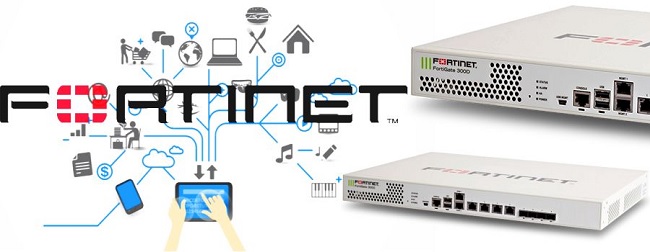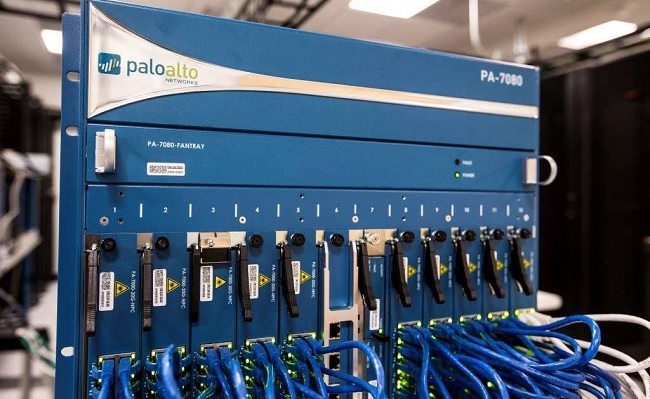
Fortinet Firewall Vs Palo Alto Firewall, Which is Better?
For enterprise and large-scale networks, the next-generation firewall is a critical security product. The capabilities of a next-generation firewall (NGFW) go beyond those of a stateful network firewall. We’re putting two leaders up against each other today to see how they perform. Determine the firewalls you might encounter in your data center tomorrow.
Palo Alto Networks and Fortinet are the top two vendors of next-generation firewalls (NGFWs). They both have practically all of the features of a next-generation firewall. There are a few important distinctions between the two.
In this article, we’ll look at the benefits and drawbacks of their technology.
Features of Fortinet firewalls
Fortinet offers a comprehensive security portfolio that includes EDR, email security, web application firewall/web application and API protection (WAF/WAAP), network access control (NAC), deception, and identity and access management, in addition to firewalls (IAM). The addition of a security operations center (SOC) as a service, as well as SASE and ZTNA product options, are among the most recent improvements. URL filtering and advanced threat detection features have also been improved by Fortinet. They’ve also integrated the Fabric Management Center’s network operations center (NOC) and security operations center (SOC) operations.
The following are the primary characteristics and benefits of Fortinet’s Next-Generation Firewalls:
• You can effectively fight ransomware with full network visibility, SSL protection, including TLS1.3, and automatic threat protection.
• You can manage all risks and cut costs using artificial intelligence (AI) and machine learning (ML)-powered services. DNS security services, online and video filtering, and an intrusion prevention system (IPS) are among them.
• With Zero Trust Network Access, you can provide a streamlined and secure user experience to your distributed workforce (ZTNA).
Features of Palo Alto Networks firewalls
Palo Alto Networks is a leader in this Magic Quadrant. They offer different firewalls for different deployment use cases: hardware firewalls (PA-Series), virtual firewalls (VM-Series), FWaaS (Prisma Access) and containerized firewalls (CN-Series). They also offer identity-based segmentation using Prisma Cloud. Panorama is a firewall centralized management that is available as both a hardware and a virtual appliance. Palo Alto also sells endpoint security, cloud security, and security operations products in addition to firewalls.
The following are the main characteristics of Palo Alto Networks’ NGFWs:
• Virtual, easy-to-deploy, scalable, and automatable firewalls from the VM-Series isolate and protect key systems, improve public cloud security, and protect private clouds.
• Containerized NGFWs from the CN-Series safeguard traffic between container trust zones in Kubernetes settings, as well as other workload types, without slowing down development.
• Hardware for the PA-Series NGFWs is built for ease of use, automation, and integration. We propose looking into the PA-7000 series, which allows you to safeguard your data center at full speed while also providing business and service provider deployments with versatility, simplicity, intelligence, and power.
Difference between Fortinet and Palo Alto Firewalls
Here’s how the NGFWs from Fortinet and Palo Alto Networks compare.
- Security Capabilities
Both firms performed well in CyberRatings firewall testing and MITRE endpoint security testing, but Palo Alto’s consistent top results and positive customer comments give it the edge.
- Pricing
Users generally remark that Fortinet’s pricing flexibility is greater and prices are lower.
- Integration And Deployment
Users of both companies’ firewalls claim they’re fairly simple to set up, but reported implementation times for Fortinet are shorter, therefore Fortinet takes the edge.
| Features | Fortinet NGFWs | Palo Alto Networks NGFWs |
| Ease of Deployment | √ | |
| Ability to Understand Needs | √ | √ |
| Pricing Flexibility | √ | |
| Quality of End-User Training | √ | |
| Ease of Integration Using Standard Tools and APIs | √ | |
| Availability of Third-Party Resources | √ | |
| Service and Support | √ | |
| Willingness to Recommend | √ | √ |
| Overall Capability Score | √ |
Conclusion
Fortinet’s next-generation firewalls (NGFWs) secure any edge at any scale while providing complete network visibility and enhanced threat protection. Full visibility and protection, AI/ML-powered FortiGuard services, natively integrated proxy, hyper-scale security, automation-driven network management, and security fabric integration are some of the primary features of Fortinet NGFWs.
ML is used in Palo Alto Networks’ virtual, physical, and container NGFWs. To future-proof network security, you can use cloud-delivered security services, centralized network security administration, and the latest PAN-OS technologies.
Both NGFW service providers are worthwhile investments; examine and contrast the solutions on offer and select the one that best fits your company’s profile.
So, choosing between the two brands depends on your own situation. Palo Alto was recommended in our analysis and review if you required the highest level of security and firewall capacity. Take a deeper look at Fortinet if money and resources are a concern.
If you want to order Palo Alto Networks products, welcome to visit: Shop Palo Alto Network at Router-switch.com .
Related Topics:
Cisco Firewalls vs. Huawei Firewalls
An SMB Network Solution with Cisco Firewalls
The Next-Generation Firewall of Fortinet





